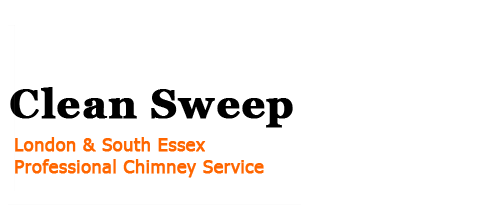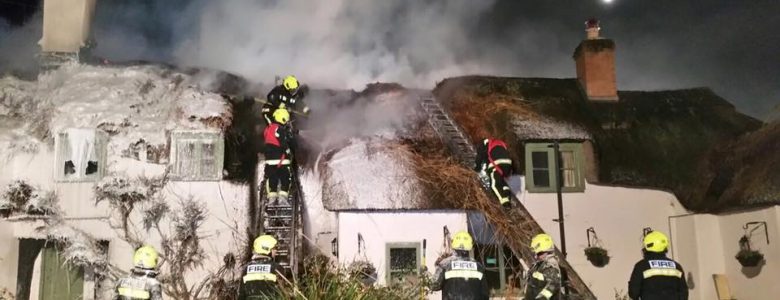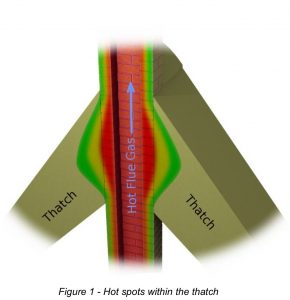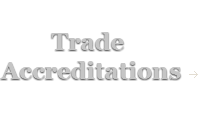Hello all and welcome to today’s blog where you will learn important information about Thatched properties and their chimneys.
Firstly what’s the difference between a thatch house and a house with a tiled roof?
well I guess you all heard the fable if the three little pigs? Where the big bad wolf will huff and puff and blows down the houses made of wood and straw? Well in this case the wolf is fire and yes a Thatched house is made of wood and straw.
Differences in building regulations and Standards
There are several differences between the building regs required for Thatched properties and that of brick built places below are some examples.
- The chimney stack of a Thatched property must terminate 1.8m above the ridge line this is 1m for typical modern construction.
- The chimney of a Thatched property must be lined and insulated to prevent heat transfer. This is typically achieved with a rigid steel chimney system but there are alternative methods. There is no requirement for insulation in a modern brick house only that the lining is sufficient and sound.
There are other differences between the regs of thatch and typical build but I can’t list everything here.
What causes chimney fires in a Thatched property over and above a modern constructed brick and tiled house?
There are two additional methods that a Thatched property can become the victim of a house fire caused by the chimney.
Direct and radiant heat transfer including cracks and damaged mortar
- Direct and radiant heat transfer. When a chimney catches on fire the bricks of its structure get very hot inside over 1000c. As the bricks get hot the heat begins to travel from the inside to the outside where the hot bricks come into contact with the straw of the thatch. As thatch is such a good insulator the heat cannot escape and it eventually combusts. This problem is greatly increased in old chimneys that are damaged or in a poor state of repair as small cracks and missing mortar can expand when hot and leave a direct line of sight between thatch and flames.
Hot ember ejection.
- Hot ember ejection does not require a chimney fire to catch the thatch alight although it is far more likely to happen when it does. Just like the name suggests it is possible for hot embers to exit through the chimney pot and fall back down onto the thatch. This is one of the reasons a taller chimney stack is required under building regulations section j. According to the burgoynes model many thatch chimney fires they investigate have chimneys which are too short.
Insurance and increased consumer risk
Due to the additional risk posed by owning a 500 year old house made of wood and straw most insurance companies are very strict with the requirement to both sweep and camera survey the chimneys of Thatched properties.
It is typical for a chimney to be required to be swept by a professional sweep registered with one of the HETAS once per season when in use and a camera survey is performed every three years.
Sweeping certificates must be kept by the sweep and house owner. Chimney sweeps may require additional insurance to sweep Thatched properties.
What can the consumer do to minimise the risks?
- Have the chimney swept by a certified professional on a regular basis, ask to see their credentials most sweeps are not trained to deal with thatch properties.
- Contact your insurance company and find out what your responsibilities are
- Burn only approved fuels and or wood with a very low moisture content <20 percent
- Have the chimney camera surveyed and signed of every third year or as often as the insurance company requires.
- Have the thatch treated with a fire retardant product
- On and around November the 5th be wary of fireworks, dampen Your roof with a hose and have it at hand.
- Have the flue treated with a product such as cre-away regularlyto remove flammable creosote.
- Do not slumber or over fire your appliance
- Never use paper or accelerants to light your fire stick with fire lighters and minimal kindling.
- Do not burn stoves with their door open unless they are designed too work that way.
- Never leave a fire unattended!
- Spark arresters are rarely reccomended as they are difficult to clean and cause resistance to flow causing unnecessary additional creosote buildup within the flue system
- Make sure your chimney is long enough
- Have a proper fire assesment done on your property
So in conclusion.
Responsibility.
The chimney sweep is responsible to be adequately qualified, equipped and insured to undertake the type of work they are doing and to keep records of such work. They must be professional in their actions. Our company Clean Sweep Chimney Services offers expert advice and service in this regard.
The customer is responsible to employ a person competent enough to undertake their work, to comply with the requirements of their insurance company, to use their appliance in accordance with the manufacturers instructions. To only burn approved fuels, to utilise common sense where fire is concerned, to keep records of sweeping and installations. A customer must either use a HETAS registered installer or get installations signed of through building control. You should have a fire safety inspection. Etc, etc not being a lawyer there may be much more responsibilities that I have not mentioned.
very few chimney sweeps are thatch experts. At the time of printing this blog only the Guild of master chimney sweeps run a course specifically for chimney sweeps who service Thatched properties. Thatch is a huge subject that I have only just touched upon in this blog
I myself am a lecturer on the Gmcs Thatched course but I’m still learning everyday.
Most of the thatch properties in the UK are situated in the southwest, if you require a professional qualified chimney sweep for your Thatched property in this area give our sister company Hodgson’s chimney sweeps a call









Paul Ross
My understanding is radiant heat transfer has been tested by insurance companies and the Fire Protection Association and could not replicate this information. I would recommend that you confirm this old information with the latest testing and contact The Thatch Advice Center or the Thatching Advisory Services who I believe both do not now subscribe to the heat transfer information you have stated.
Daniel
My information is from the fire service, Hetas, current building reg who insist in insulated flues to prevent radiant heat transfer. Further information is from insurance companies and real life experience.
The burgoynes model which is one such study is attached for everyone to read on the article.
As chimneysweeps we must comply with building regulations and what insurance companies require of us.
Daniel
The problem is with the limited research that has been done on radiant heat transfer by the FPA is that it is under normal conditions and not during a chimney fire. These houses have had normal fires in them for 500 years. It is poorly maintained, unswept chimneys being used by people who are uneducated in there use that tend to catch fire. When they do this is when the issue arises.
In order to make the public as safe as we can they must be educated on both possible sources of ignition and not biased one way or another. Regular chimney sweeping, consumer education and good maintenance has kept these houses safe from fire for half a millennium.
Thatch Advice Centre
The problem of building regulations, HETAS advice, fire service advice, insurance requirements and the more recent updated thatch fire information being in sync (or not) is already well noted. The full Burgoynes Forensic Investigation report and a link to the FPA research document in the Building Conservation Directory are on our website. We suggest people read and make up their own minds. Our Thatch Fire Safety leaflet has been updated to reflect this. We have enquiries about this at the Thatch Advice Centre all the time and HETAS refer cases to us as well. Some of us are working ‘ahead’ of the game in an attempt to help people to reduce their risks while the larger organisations deal with their own updates and clarification in their own time and with their limited budgets. The long anticipated FPA/HE/NFU guidance will be sent to us to promote once it is finalised, so watch this space, it will be on our website, and referenced on social media and via our newsletter as well. All new evidence is to be welcomed as understanding the thatch fire risks and reducing them appropriately must surely be on everyone’s agenda. Currently the main proven risks are ejected embers and chimney fires. Heat transfer could not be proven in FPA research and it appears (from the document above) that they tried. Chimney fires do, we understand generate a lot of heat but in a comparatively short amount of time (investigators do not think it is long enough to get bricks to the magic 200 degrees that thatch burns at) while ejecting a lot of sparks and embers. Chimney integrity is very important. We have worked over the last 10 years to get to this stage of understanding and it is important to share the up to date information to help people now in time for the next burning season. Heat transfer theory has been about for years, perhaps the number of thatch fires have not reduced because the main risk of sparks and embers had not been addressed. Sweep those chimneys and take care of how and what you burn.
Jo Thurgur
Hi – You say that sweeps ‘may’ require additional insurance in order to sweep thatched properties. Could you explain in what instances this might be the case?
Thanks
Daniel
Yes Jo,
Typically when working on a Thatched property, the customers insurer will use your certificate as assurance and evidence. Because if this it is typically required for you to indemnify yourself agains the possible risk of negative outcomes.